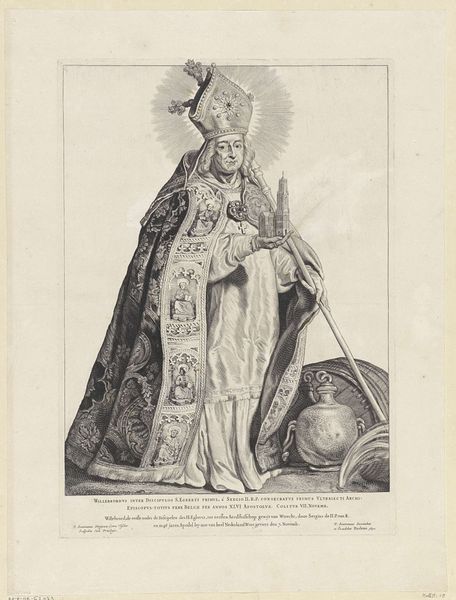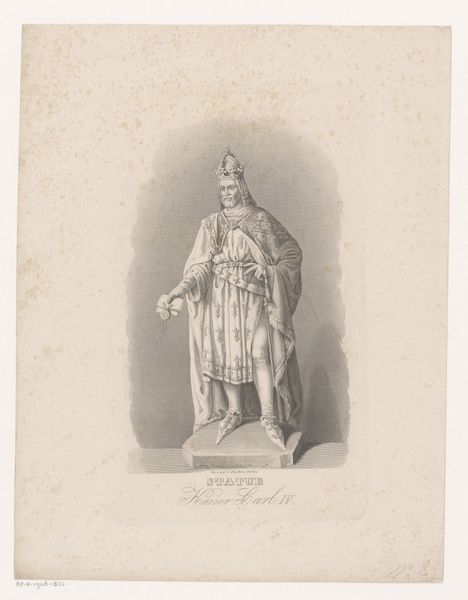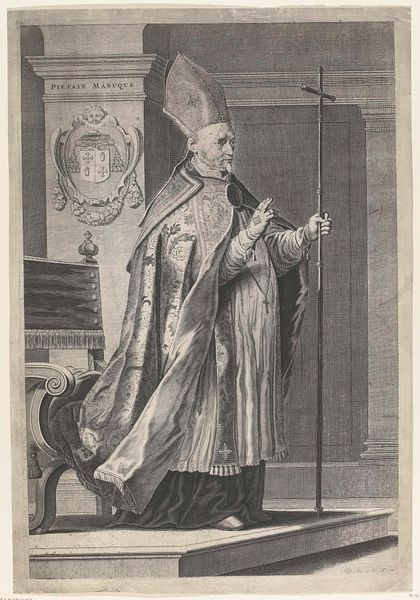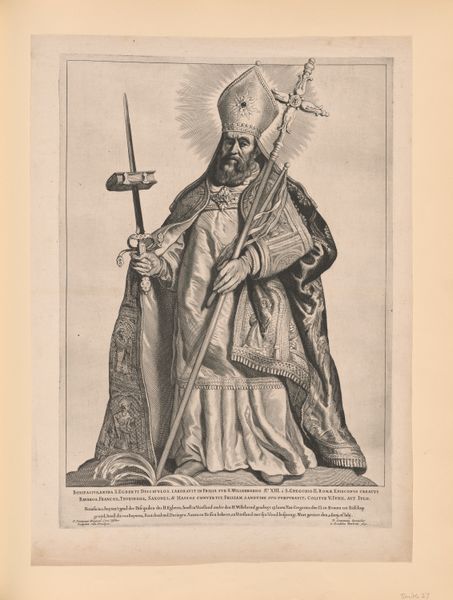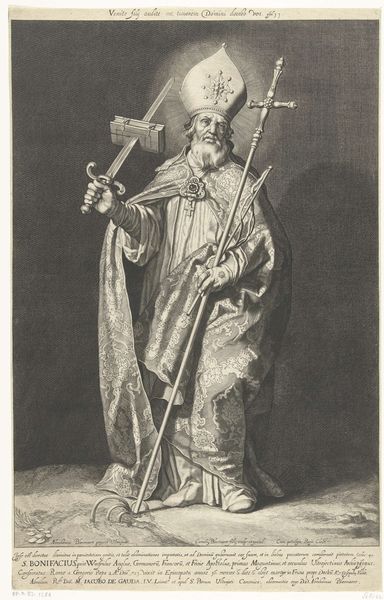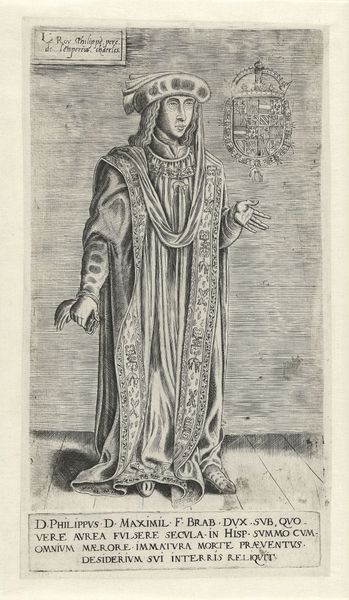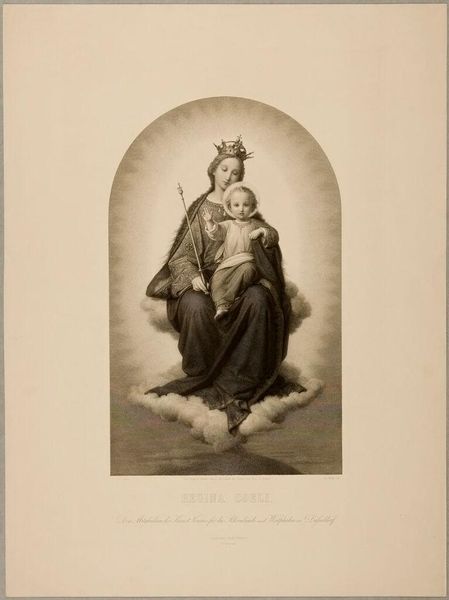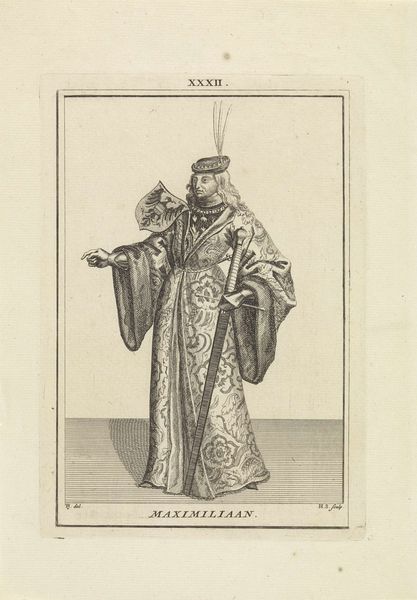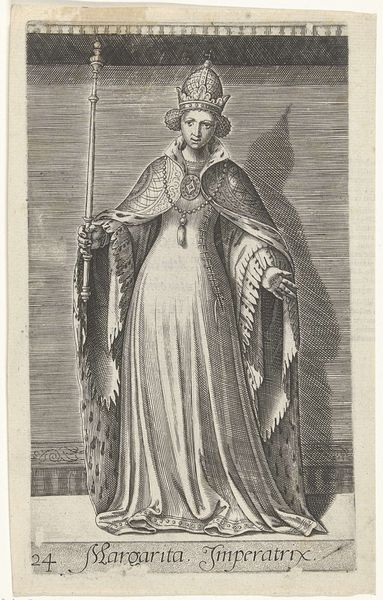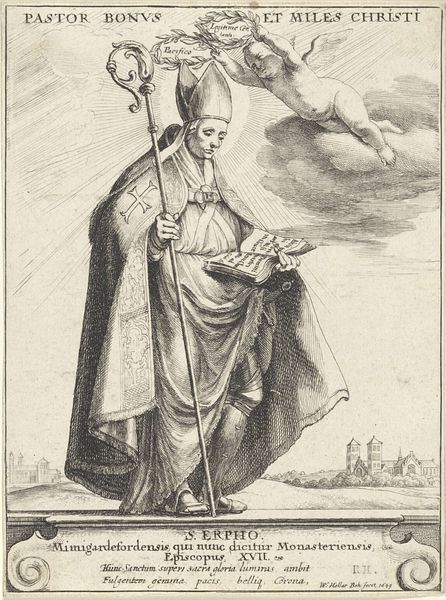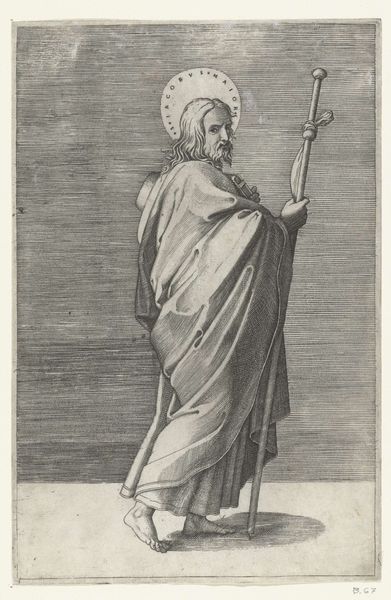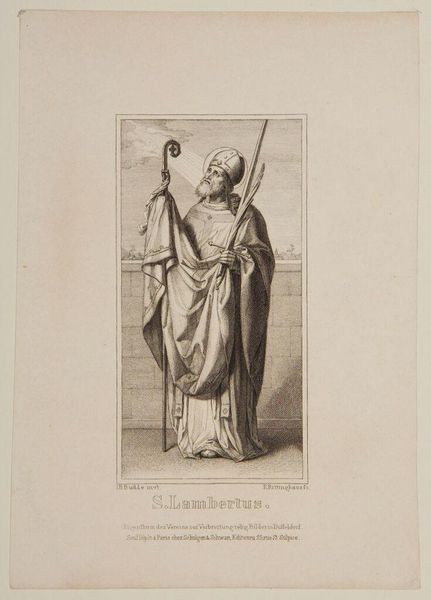
print, engraving
#
portrait
#
baroque
# print
#
engraving
Dimensions: height 399 mm, width 263 mm
Copyright: Rijks Museum: Open Domain
Editor: So, this is "H. Willibrordus," a Baroque engraving by Nicolaes van Lijnhoven, dated before 1702. He’s holding a miniature church, looking very grand in his bishop's robes. It’s the weight of history in those robes that strikes me. What historical context are we seeing at play here? Curator: This portrait serves as a fascinating piece of historical propaganda. Van Lijnhoven presents Willibrordus, not just as a religious figure, but as a foundational architect of regional power. He’s positioned as the spiritual and, by implication, the cultural ancestor of the ruling elite. Notice how the architectural model isn’t just a church, but a symbol of institutional power. The pose reinforces this, mirroring those found in portraits of monarchs. How might such imagery function in the early 18th century? Editor: Ah, so it's not just about religious devotion. The print's circulation would have visually cemented a link between the Church and regional authority. Curator: Precisely. Think about who was likely commissioning and consuming prints like these. They weren't simply devotional objects for the common person. They functioned as assertions of legitimacy in the face of evolving political landscapes. Did the choice of the print medium have relevance to the intent? Editor: It would allow for much wider distribution compared to painting, therefore influencing more of the populace with the messaging of this alliance between church and governance. The symbolic objects reinforce Willibrordus’s historical influence within that political structure. Curator: Exactly. Therefore, it becomes less about simple aesthetics and more about how this image participated in a larger cultural conversation about power and heritage. These images actively construct the public perception of historical figures. Editor: I see it now. It is less of a benign religious icon and more of a statement regarding governance during that time period. I had only initially seen the saintly figure but missed the significance of this as a commentary on societal power dynamics. Thank you. Curator: Of course, looking beyond just surface-level appearances allows you to really unpack art's role in history.
Comments
No comments
Be the first to comment and join the conversation on the ultimate creative platform.

